- Planting Peppers in the Open Ground: Pros and Cons
- Pros of Using Two Seedlings per Hole
- Cons of Using Two Seedlings per Hole
- Conclusion
- Benefits of Using TWO Seedlings per Hole
- Increased Yield
- Improved Pollination
- Enhanced Pest Resistance
- Faster Maturity
- Better Disease Prevention
- Improved Fruit Quality
- Efficient Space Utilization
- Easier Harvesting
- “Question-Answer”
- Why should I consider planting two pepper seedlings per hole?
- What are the advantages of using two seedlings instead of one per hole?
- Can I plant only one pepper seedling per hole?
- Will planting two pepper seedlings per hole affect their growth?
- How much space should I leave between the two seedlings?
- Are there any disadvantages to planting two pepper seedlings per hole?
- “Video” How to Plant 12 Peppers in a 2×6 ft. Raised Bed: Soil, Fertilizing, Moisture is Key, Spacing & More
When it comes to planting peppers in the open ground, one question gardeners often face is whether to plant one or two seedlings per hole. While traditional wisdom may suggest planting only one seedling to allow it enough space to grow, some gardeners have started experimenting with planting two seedlings per hole. This approach, known as “double planting,” has its pros and cons, and understanding them can help you make an informed decision for your own garden.
The main advantage of double planting peppers is increased yield. By placing two seedlings in one hole, you essentially double the number of plants in a given space. This can lead to a higher overall harvest, as the plants can compete with each other for nutrients and sunlight, resulting in more robust growth. Additionally, planting two seedlings per hole can help provide some insurance against possible losses due to pests, diseases, or unfavorable weather conditions.
On the other hand, there are also drawbacks to consider when using double planting. One potential issue is overcrowding, which can lead to competition for resources and hinder the growth of both plants. The roots of the two seedlings may intertwine, making it difficult for them to establish a strong root system. Furthermore, the increased density of plants can create a more favorable environment for pests and diseases to spread.
It’s important to note that the decision to use double planting should be based on the specific conditions of your garden and the variety of peppers you are planting. Some pepper varieties may have a more compact growth habit, making them more suitable for double planting, while others may require more space to reach their full potential. Additionally, if you have limited space or want to maximize your harvest, double planting can be a viable option.
In conclusion, planting two pepper seedlings per hole can have both advantages and disadvantages. While it can potentially increase yield and provide insurance against losses, there is also a risk of overcrowding and hindered growth. It is important to carefully consider the specific conditions of your garden and the variety of peppers you are planting before deciding whether to use double planting. Ultimately, experimentation and observation will help you determine the best approach for your own garden.
Planting Peppers in the Open Ground: Pros and Cons
Planting peppers in the open ground can be a rewarding experience for gardeners. However, there are both pros and cons to consider when deciding whether or not to use two seedlings per hole.
Pros of Using Two Seedlings per Hole
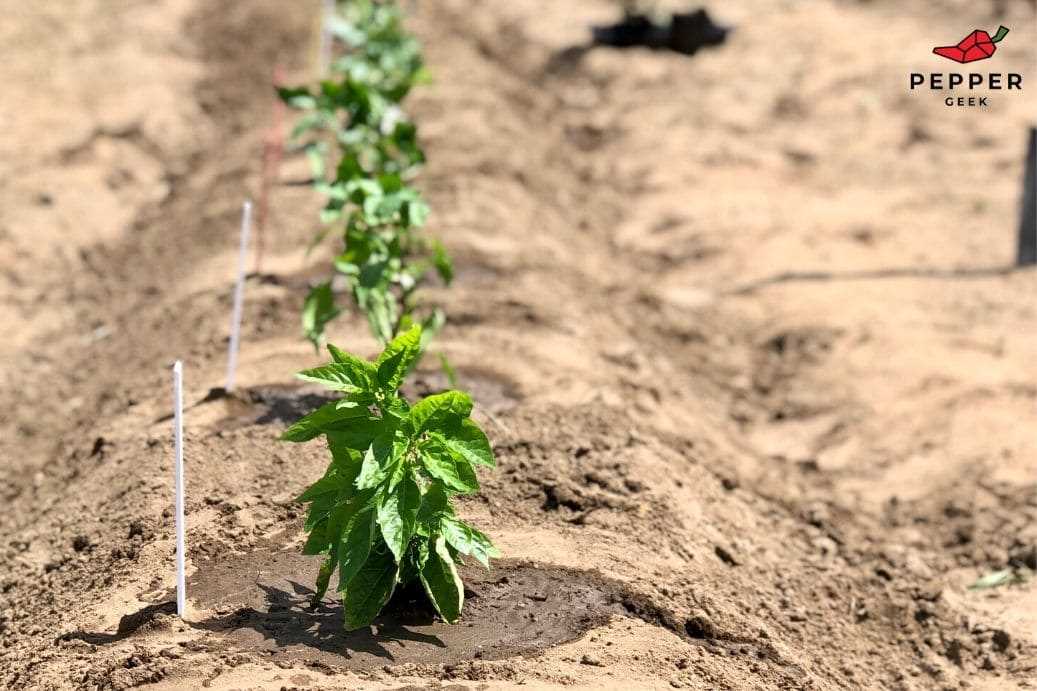
- Increased Yield: Planting two seedlings per hole can result in a higher yield of peppers. This is because the plants can support each other and fill out the space more efficiently, leading to more fruits.
- Pest and Disease Resistance: Having multiple plants in one hole can provide added protection against pests and diseases. If one plant is affected, there is still a chance that the other plant will remain healthy and produce a crop.
- Space Saving: By planting two seedlings per hole, gardeners can make the most of limited space in their garden. This can be especially beneficial for those with small or urban gardens.
- Aesthetic Appeal: Multiple pepper plants in one hole can create a visually appealing display in the garden. It can also be a practical way to create a natural support system for the plants.
Cons of Using Two Seedlings per Hole
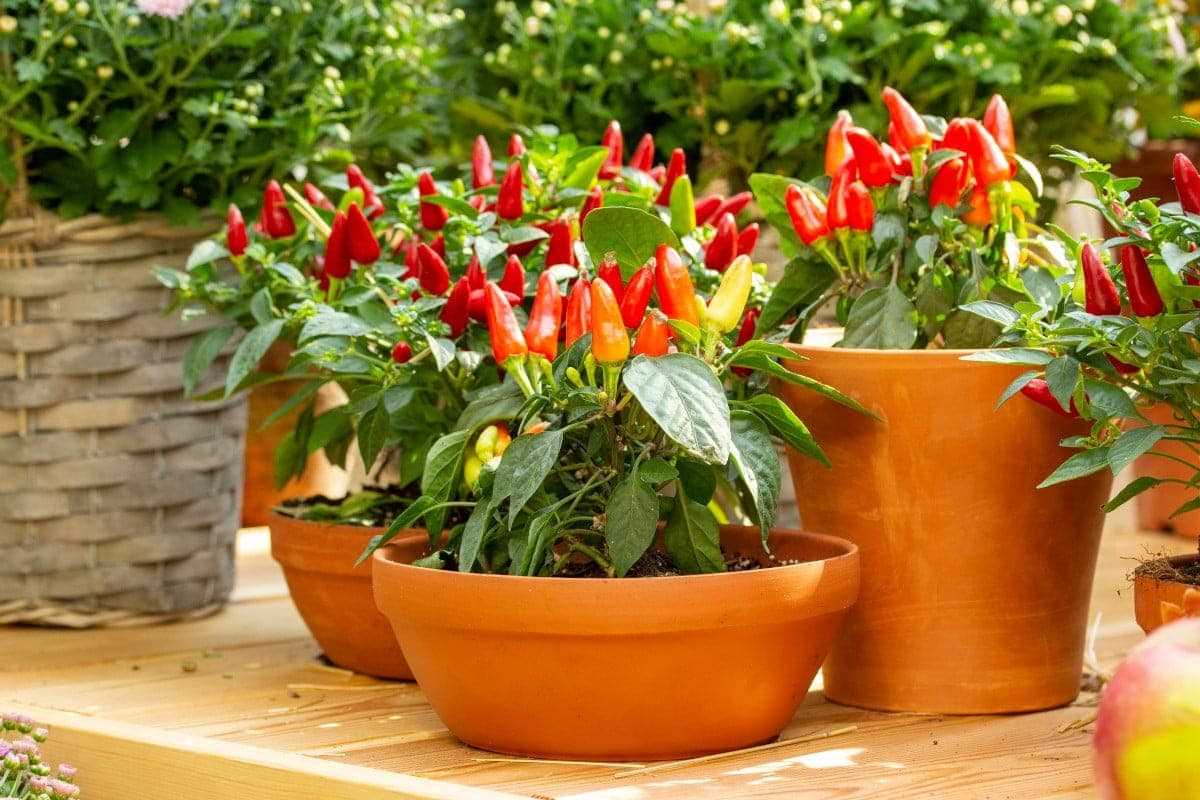
- Competition for Resources: When two seedlings are planted in one hole, they will have to compete for nutrients, sunlight, and water. This can potentially stunt the growth of both plants and lead to a lower overall yield.
- Root Crowding: With two plants in one hole, there is a risk of root crowding, which can restrict the plants’ ability to absorb nutrients and water. This can result in stunted growth and an increased susceptibility to diseases.
- Maintenance: Planting two seedlings per hole may require more maintenance in terms of watering, fertilizing, and pruning. It can be more time-consuming and labor-intensive compared to planting single seedlings.
Conclusion
Deciding whether or not to use two seedlings per hole when planting peppers in the open ground depends on a variety of factors, including garden space, desired yield, and available resources. Ultimately, it is up to the individual gardener to weigh the pros and cons and make an informed decision based on their specific needs and circumstances.
Benefits of Using TWO Seedlings per Hole
- Better chances of successful growth: Planting two seedlings per hole increases the odds of at least one seedling surviving and thriving. This is especially beneficial in areas with unpredictable weather conditions or in plots with less ideal soil quality.
- Enhanced pollination: Having two plants in close proximity can improve cross-pollination rates and increase fruit production. This is particularly advantageous for peppers, as they are self-pollinating but can benefit from extra assistance in achieving higher yields.
- Increased yield: Two seedlings per hole can lead to higher crop yields compared to planting a single seedling. The additional plant can fill empty spaces and utilize available resources, resulting in a more abundant harvest.
- Additional support: Pairing two seedlings can provide natural support for each other as they grow. This can be especially useful in areas prone to strong winds or when growing taller pepper varieties that may require additional support structures.
- Disease protection: If one seedling becomes infected with disease, having a second seedling increases the chances of having at least one healthy plant. This can help prevent total crop loss and provide some level of protection against the spread of diseases.
- Succession planting: Planting two seedlings allows for succession planting, where one seedling is planted earlier than the other. This can ensure a longer harvest period, as the first planted seedling will start producing peppers earlier, while the later planted seedling will extend the harvest season.
Increased Yield
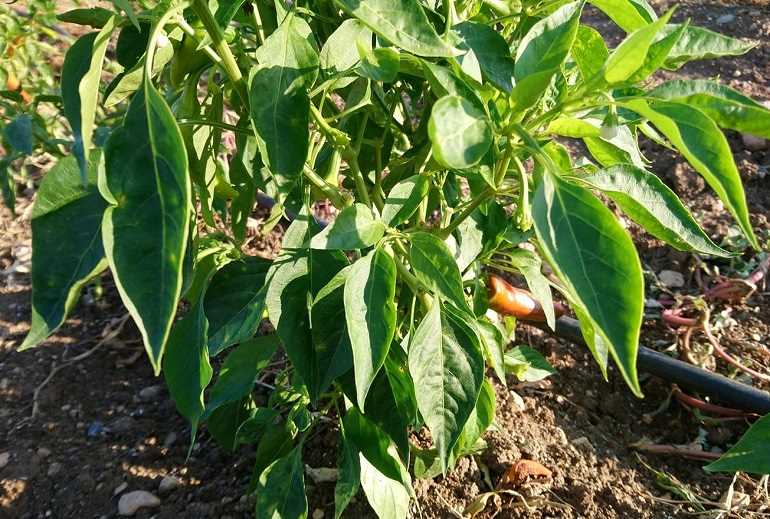
- Planting two pepper seedlings per hole in the open ground can significantly increase the overall yield.
- This planting method allows for better use of available space, maximizing the number of plants that can be grown.
- When two seedlings are planted together, they can provide mutual support and protection against wind damage.
- The close proximity of the plants can create a microclimate that is beneficial for growth and fruit production.
- The plants can also protect each other from pests and diseases, reducing the risk of crop loss.
Studies have shown that planting two pepper seedlings per hole can result in larger and more abundant fruit harvest. The close spacing of the plants encourages competition for nutrients and sunlight, leading to stronger and more vigorous growth.
Additionally, when peppers are planted in pairs, they can benefit from cross-pollination, which can lead to increased fruit set and higher yields. This is especially beneficial for varieties that require cross-pollination for optimal fruit development.
In conclusion, planting two pepper seedlings per hole in the open ground can significantly increase the overall yield and improve the quality of the harvest. This planting method allows for better space utilization, mutual support between plants, and increased cross-pollination, resulting in larger and more abundant peppers.
Improved Pollination
One of the main reasons to use two seedlings per hole when planting peppers in the open ground is to improve pollination. Peppers are self-pollinating plants, meaning they have both male and female flower parts on the same plant. However, they also rely on wind or insects to transfer the pollen between the flowers.
By planting two seedlings per hole, you increase the chances of having more flowers available for pollination. This can result in better fruit set and higher yields. The close proximity of the plants can help to create a microclimate that attracts pollinators, such as bees and butterflies, to the area.
Additionally, having two plants in close proximity can also facilitate cross-pollination between different varieties of peppers. This can lead to the development of new and potentially improved pepper varieties.
Enhanced Pest Resistance
Growing two pepper seedlings in a single hole can also provide enhanced pest resistance for your plants. By planting two seedlings close together, you create a dense vegetation that is more difficult for pests to navigate through. This can help to deter common pests such as aphids, whiteflies, and thrips, which can easily infest a sparse plant population.
Additionally, planting two seedlings per hole can create a barrier effect against crawling pests like slugs and snails. These pests typically move along the ground, and having two plants side by side creates a barrier that they may be less likely to cross.
In addition to physical barriers, having multiple plants in a single hole can also help to enhance pest resistance through companion planting. Certain plants, such as marigolds or basil, are known to repel pests due to their strong scents or natural compounds. By planting these companion plants alongside your pepper seedlings, you can further deter pests and reduce the risk of infestation.
It’s important to note that while planting two seedlings per hole can provide enhanced pest resistance, it is not a foolproof method. Pests may still find their way to your plants, particularly if the population in your area is high or if you have nearby infested plants. Regular monitoring of your plants and taking appropriate pest control measures, such as using organic pesticides or practicing integrated pest management, is still important to maintain plant health.
Overall, the added pest resistance that comes with planting two pepper seedlings per hole can be a beneficial factor to consider, especially if you have had previous issues with pest infestations in your garden.
Faster Maturity
One of the advantages of using two seedlings per hole when planting peppers in the open ground is that it can lead to faster maturity of the plants. When two seedlings are planted together, they compete for resources such as water, nutrients, and sunlight.
This competition can result in the plants growing at a faster rate and reaching maturity earlier than if they were planted individually. The close proximity of the two plants can also create a microclimate that is conducive to faster growth.
By planting two seedlings per hole, gardeners can expect to harvest peppers earlier in the season. This can be particularly beneficial in regions with shorter growing seasons or cooler climates, where every week of growth counts.
However, it is important to note that planting two seedlings per hole can also lead to overcrowding if not properly managed. The plants may compete too heavily for resources, resulting in stunted growth or reduced yields. It is crucial to provide adequate spacing and ensure that the plants receive enough water and nutrients to thrive.
Better Disease Prevention
One of the main advantages of planting two seedlings per hole when growing peppers in the open ground is better disease prevention. By planting two seedlings together, you create a more crowded and dense planting environment, which can help to prevent the spread and development of diseases.
When pepper plants are spaced too far apart, there is more opportunity for diseases to thrive. The open spaces allow for the movement of air and pathogens, increasing the chances of infection. However, when two seedlings are placed together, they form a dense canopy of leaves, which limits air movement and reduces the spread of diseases.
In addition, the dense planting also creates a microclimate that is less favorable for disease development. The leaves of the plants shade each other, preventing direct sunlight from reaching the soil surface. This reduced exposure to sunlight results in a slower drying of the soil, creating conditions less conducive to the growth of disease-causing organisms.
Moreover, by planting two seedlings in a single hole, you also increase the competition between the plants. This competition for nutrients and water encourages stronger and more vigorous growth, which can help the plants resist and recover from diseases more effectively.
However, it is important to note that while planting two seedlings can provide better disease prevention, it is not a guarantee against all diseases. It is still essential to practice good garden hygiene, such as removing any infected plants or plant debris, rotating crops, and providing adequate irrigation and drainage.
Improved Fruit Quality
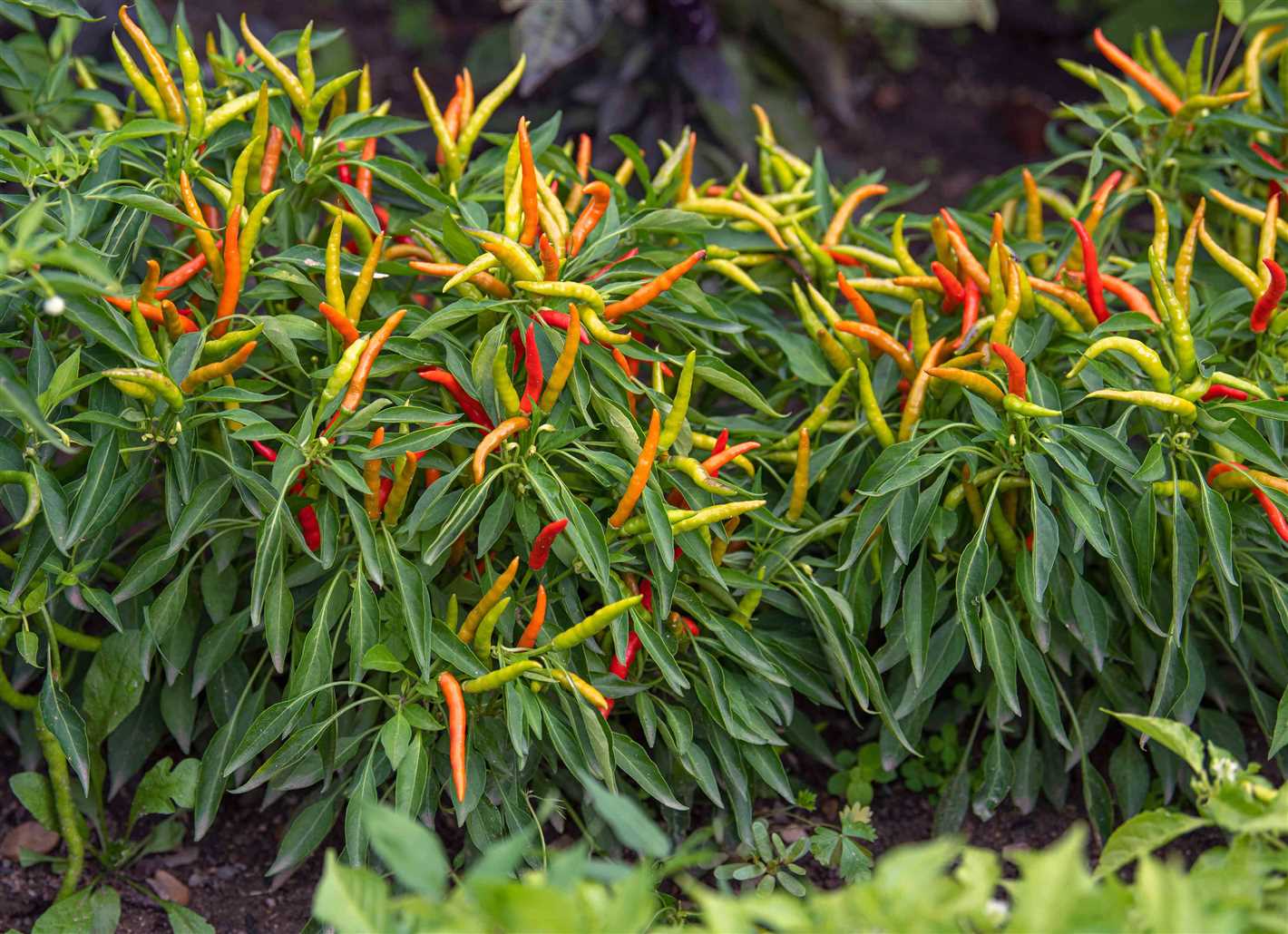
Planting two pepper seedlings per hole can lead to improved fruit quality. When two seedlings are planted together, they compete for nutrients and water in the soil, which can result in stronger, healthier plants. These plants are more likely to produce larger, tastier peppers.
The competition between the seedlings also stimulates more vigorous growth and development. As the plants compete for limited resources, they are pushed to grow taller and produce more branches. This can lead to increased fruit production and a higher yield overall.
In addition, planting two seedlings per hole can help with cross-pollination. Cross-pollination occurs when pollen from one plant fertilizes the flowers of another plant. This can result in peppers with improved taste, color, and texture.
Furthermore, when two seedlings are planted together, they provide each other with support and protection. The close proximity of the plants can help shield them from wind and harsh weather conditions. This can reduce the risk of damage to the plants and their fruits.
Overall, planting two pepper seedlings per hole can lead to improved fruit quality due to increased competition, cross-pollination, and mutual support. However, it is important to ensure that there is enough space and resources available for both plants to thrive. Proper care and maintenance, including regular watering and fertilization, are essential for maximizing the benefits of planting two seedlings per hole.
Efficient Space Utilization
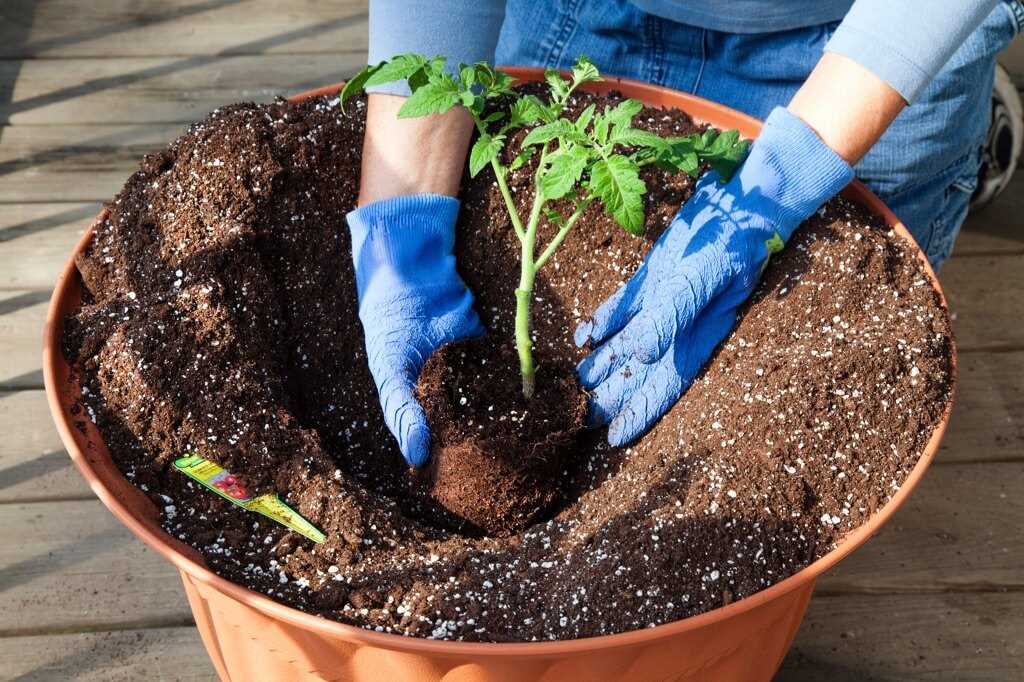
Planting peppers in the open ground using two seedlings per hole is an effective way to optimize space utilization in your garden. By planting multiple seedlings in each hole, you can maximize the number of peppers you can grow in a limited area.
Using two seedlings per hole allows you to grow twice as many pepper plants compared to planting only one seedling per hole. This means that you can harvest more peppers from the same amount of space, increasing your overall yield.
Furthermore, planting two seedlings per hole can also help with pollination. Peppers are usually self-pollinating, but having multiple plants in close proximity can increase the chances of pollination and fruit set. This can result in a higher yield of peppers.
Another advantage of planting multiple seedlings per hole is that it can provide some insurance against plant loss. If one seedling fails to thrive or becomes damaged, you still have another seedling in the same hole that can continue to grow and produce peppers.
However, it is important to consider some drawbacks of using two seedlings per hole. The plants may compete for nutrients, water, and sunlight, which can affect their overall growth and productivity. Therefore, proper spacing and regular maintenance practices, such as pruning and fertilizing, are essential to ensure the health and productivity of the plants.
In conclusion, planting peppers in the open ground using two seedlings per hole is a strategy that allows for efficient space utilization and increased pepper yield. With proper care and maintenance, this method can be a successful way to maximize the productivity of your pepper plants.
Easier Harvesting
Planting two seedlings per hole when growing peppers in the open ground can make harvesting easier.
With two plants in one hole, the plants tend to grow more upright, making it easier to access the peppers when they are ready for harvest.
This arrangement allows for better spacing between the plants, reducing the risk of overcrowding and making it easier to reach in and harvest the peppers without damaging the neighboring plants.
Additionally, planting two seedlings per hole allows for a more organized and systematic approach to harvesting.
As the plants grow and start to produce peppers, it becomes easier to keep track of which plants are ready for harvest and which ones need more time.
By planting two seedlings per hole, it is possible to stagger the harvest, allowing for a continuous supply of fresh peppers over a longer period of time.
“Question-Answer”
Why should I consider planting two pepper seedlings per hole?
Planting two pepper seedlings per hole can help increase the yield of peppers in your garden. With two plants in close proximity, they can mutually support each other, sharing resources such as nutrients and water, and providing more shade to prevent weed growth. Additionally, having two plants can increase the chances of successful pollination and fruit set. However, it is important to ensure that the plants have enough space to grow and proper care is provided.
What are the advantages of using two seedlings instead of one per hole?
Using two pepper seedlings per hole can have several advantages. Firstly, it can help maximize the productivity of your garden by increasing the number of peppers you can harvest. Secondly, the two plants can provide support to each other, preventing them from falling or bending during strong winds or heavy fruit load. Thirdly, by sharing resources, such as nutrients and water, the plants can grow healthier and produce better fruits. Lastly, having two plants can increase the chances of successful pollination and fruit set.
Can I plant only one pepper seedling per hole?
Yes, you can plant only one pepper seedling per hole if you prefer. However, planting two seedlings per hole has its advantages, as mentioned earlier. Planting only one seedling can still result in a successful pepper harvest, but by planting two, you can potentially increase the yield and overall health of the plants.
Will planting two pepper seedlings per hole affect their growth?
Planting two pepper seedlings per hole may affect their growth if they do not have enough space to spread their roots and grow. It is important to ensure that each plant has enough space to develop properly. However, if the plants are properly spaced and provided with adequate care, such as regular watering and appropriate fertilization, they should be able to grow well and produce a good yield.
How much space should I leave between the two seedlings?
It is recommended to leave around 18-24 inches (45-60 cm) of space between the two seedlings when planting peppers in the open ground. This will give them enough room to grow and spread their roots without overcrowding each other. Adequate spacing is important to ensure proper air circulation and prevent the spread of diseases.
Are there any disadvantages to planting two pepper seedlings per hole?
Planting two pepper seedlings per hole can have some disadvantages if not done properly. If the plants are overcrowded and do not have enough space to grow, they may compete for resources and result in stunted growth or poor fruit production. Additionally, if one of the plants develops any diseases or pests, it can quickly spread to the neighboring plant. Therefore, it is important to provide proper spacing and ensure the plants receive adequate care to prevent these issues.







